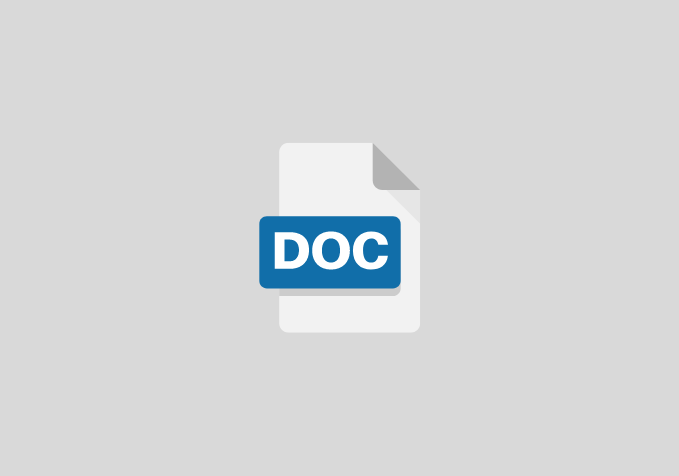Effect of Social Distancing on Nigeria’s Economic (A Case Study of Corona Virus Disease)
Chapter One
Objectives of the study
The aim of this study will be to investigate the effect of social distancing on Nigeria economy a case study of corona virus disease. The specific objectives are to:
- examine the level of coronavirus disease in Nigeria.
- investigate the impact of social distancing on Nigeria economy.
CHAPTER TWO
LITERATURE REVIEW
Introduction
The chapter will deal with literature review on the concept of the effect of social distancing on Nigerian economy a case study of corona virus disease. This will involve various definitions of social distancing, economy, the Nigerian economy COVID-19, Nigeria case of COVID-19, the review of empirical studies, theoretical review and theoretical framework.
Conceptual Review
In this section, the basic relevant concepts were reviewed. These include social distancing, COVID-19, among others.
Social Distancing
Social distancing is a set of non-pharmaceutical interventions or measures taken to prevent the spread of a contagious disease by maintaining a physical distance between people and reducing the number of times people come into close contact with each other (Harris et. a., 2020; Johnson et. al., 2020). By reducing the probability that a given uninfected person will come into physical contact with an infected person, the disease transmission can be suppressed, resulting in fewer deaths (Harris et. a., 2020; Johnson et. al., 2020). The measures are combined with good respiratory hygiene and hand washing (WHO, 2009). During the 2019–2020 coronavirus pandemic, the World Health Organization (WHO) suggested the reference to “physical” as an alternative to “social”, in keeping with the notion that it is a physical distance which prevents transmission; people can remain socially connected via technology (Harris et. al., 2020; Hensley, 2020; Tangermann, 2020; Kumar, 2020). To slow down the spread of infectious diseases and avoid overburdening healthcare systems, particularly during a pandemic, several social distancing measures are used, including the closing of schools and workplaces, isolation, quarantine, restricting movement of people and the cancellation of mass gatherings (Johnson et. al., 2020; Kinlaw & Levine, 2007).
Theoretical Review
The infectious disease causation theory
This is not a single theory, but a series of theories which were progressively refined, one after another, to explain the cause of infectious disease systems. The successive infectious disease causation theories were challenged and changed as new knowledge on infectious disease causation was developed, changing people’s views about the causes of infectious diseases. The initial infectious disease causation theory changed from before the rise of modern medicine, when infectious diseases were attributed to a variety of spiritual and demonic forces including punishment from God for sinful behaviour or weak moral character or as a result of witchcraft to the era of modern medicine. In the era of modern medicine, infectious disease causation theory changed from being based on super natural forces (demonic theory and punitive theory) to being looked upon as caused by natural processes. This involved moving medicine from magic to give it a scientific basis. Within this era, infectious disease causation theory moved from a miasmic theory which was based on the inference that the air arising from certain kinds of ground, especially low swampy areas was the cause of infectious disease, to the germ theory which postulate that infectious diseases are caused by germs/microbes/pathogens up to the current epidemiological triad theory which states that an infectious disease system is a result of the interaction of three sub-systems which are:
CHAPTER THREE
RESEARCH METHODOLOGY
Introduction
This chapter will cover the methodology of this study. Key issues discussed includes; data collection, sampling technique, instrument for data collection, method of data analysis among others.
Research Design
The research design that will be used for this study is survey. It is will be used as an assessment tool to provide information on which to base sound decisions. It also serves as a foundation for more investigation. The data gathered in a survey are usually answers to predetermined questions that are asked of respondents. This research method will be adopted because it offers opportunity for the collation of facts and information from a wide spectrum of respondents without much expense, hence it is expedient for this research.
The use of survey is a favourable option for the following reasons:
- It is accurate
- It is unstructured and can capture time change.
This method is objective in the sense that the personal bias of the researcher is not allowed in findings.
Population of the Study
The population will include all residents of Lagos state, Ogun State and FCT.
REFERENCES
- Ugochukwu, U. O., Uchechi, C. E., Chuku, A., & Huldah, I. N. (2015). Ebola epidemic – the Nigerian experience. The Pan African Medical Journal. 2015;22 (Supp 1):17. doi:10.11604/pamj.supp.2015.22.1.6625
- Kristine M. Smith, Catherine C. Machalaba, Richard Seifman, Yasha Feferholtz, and William B. Karesha. Infectious disease and economics: The case for considering multi-sectoral impacts retrieved from ncbi.nlm.nih.gov
- Collinson S, Khan K, Heffernan JM (2015) The Effects of Media Reports on Disease Spread and Important Public Health Measurements. PLoS ONE 10(11): e0141423. doi:10.1371/journal.pone.0141423.
- Harris, M.; Adhanom G., Tedros; Liu, Tu; Ryan, M. “Mike” J.; Vadia; Van K., Maria D.; Diego; Foulkes, I.; Ondelam, C.; Gretler, C.; Costas (2020). “COVID-19” (PDF). World Health Organization. Archived (PDF) from the original on 2020-03-25. Retrieved 2020-03-29.
- Johnson, C. Y.; Sun, L.; Freedman, A. (2020). “Social distancing could buy U.S. valuable time against coronavirus: It’s a make-or-break moment with coronavirus to test one of the most basic—but disruptive—public health tools”. The Washington Post. Archived from the original on 2020-03-27. Retrieved 2020-03-11.


